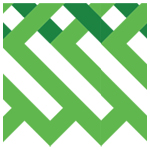Connecting two-digit place value with grouping
The purpose of this activity is to support students in understanding that tens and ones digits represent units of different sizes, and that therefore represent quantities in a two-digit whole number.

About this resource
New Zealand Curriculum: Level 2
Learning Progression Frameworks: Additive thinking, Signpost 5 to Signpost 6
These activities are intended for students who are yet to understand place value with two- and three-digit numbers. By the end of level 2 of The 2007 New Zealand Curriculum and step 5 of Learning Progression Frameworks, students are expected to know most, or all, of their addition and subtraction basic facts (number bonds to 20). Some students will still need to work on their basic facts as they learn about place value with two-digit and three-digit whole numbers.
Connecting two-digit place value with grouping
Achievement objectives
NA2-4: Know how many ones, tens, and hundreds are in whole numbers to at least 1000.
Required materials
- calculators
- place value materials: individual items grouped into tens, such as BeaNZ in film canisters, ice block sticks bundled with rubber bands (hundreds with hair ties), or a paper form, such as Place value people. Bundled materials are important as they allow partitioning and combining without the need for “trading” tens blocks for ones.
- Use a place value board (Place value with 2 digits) to organise the materials in columns and support calculation strategies. Three-column and four-column place value boards are available in Place value to 4 digits.
See Materials that come with this resource to download:
- Place value people (.pdf)
- Place value with 2 digits (.pdf)
- Place value to 4 digits (.pdf)
1.
Slowly read out a list of two-digit numbers and ask the students to type each number into a calculator. That develops the important connection between hearing the words and recording the numerals. Watch for students who hear “sixty” but type 16. This reflects a commonly experienced difficulty: distinguishing between “teen” and “ty”. Say the word again, making clear mouth shapes, and ask the student to listen for the difference between “teen” and “ty”. A good sequence of numbers is 14, 40, 25, and 36.
If appropriate to your students' knowledge, you might include te reo Māori kupu for numbers throughout this activity.
Note that in te reo Māori, the structure of the names of numbers is different to that in English (e.g., twenty is rua tekau - two tens). Consider whether this additional information will help or hinder your students.
2.
Once you have read through your list of numbers, write the list on the board and ask students to do the following. Ice block sticks and the number 36 are used here for illustration, although other discrete objects and numbers can be used.
- Can you count 36 ice block sticks for me and put them in a pile? (Say the number clearly and write it on the board.)

- I want you to put the ice block sticks into bundles of ten. You might have some left over; put them to the side of your bundles. Ten is an easy number to work with because we have ten fingers and ten toes.
- How many bundles of ten do you think you will make?
- How many ones will you have left over?
Look for students to anticipate how many tens and ones can be created based on the sounds of the spoken number and the digits written on the board.

3.
As students use the place value materials to make each number, ask them to count the number of tens and ones. Use the students' material displays to model placing the same number of tens and ones in the appropriate columns of a two-column place value board. Together, count the number of tens and ones while pointing to the relevant digits in the number displayed on the board. You could also display the number on a calculator.

Encourage students to generalise by asking them to create collections of objects that are pre-grouped in units of ten. This could initially be done as a whole class and then in pairs or small groups.
For example:
- I want you to get sixty-four ice block sticks.
- What is the easiest way to do that?
- How many tens will you need?
- How many ones will you need?

1.
Continue developing the connections between words, numerals, and quantities until students are fluent.
For example, say two-digit numbers and ask students to make the number with place value-based materials, like bundled ice block sticks or place value blocks. Write two-digit numbers and ask students to say the number in words or make it with materials.
Be mindful that asking students to draw diagrams to show the place value structure of numbers can be time-consuming for little gain. It is also highly dependent on their fine motor skills. You might introduce efficient icons to represent tens and ones, like:

2.
Mask place value-based materials and ask students to image the structure of the quantities. For example, build a model of 73 and ask:
- I made 73 under this cover.
- What does it look like?
- How many tens are there?
- How many ones?
The aim is for students to know the structure of the quantity from the digits in the numbers. Counting in tens is a sign that they are not doing this. They are attending to the process of counting rather than the structure of the two-digit amount.
The quality of the images on this page may vary depending on the device you are using.


